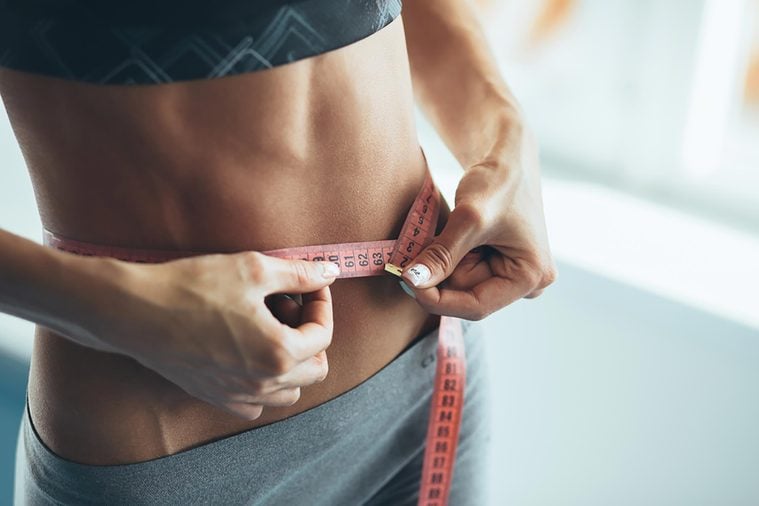This Is Where Your Fat Actually Goes When You Lose Weight
Updated: Sep. 28, 2017
Weight loss happens when you burn more calories for energy than you take in. But after you shed them, what exactly happens to all those extra pounds of fat?
 Seems like everyone wants to trim the fat, which why it’s nice to know you can bust belly fat in a single day. And when you do slim down, it might seem like fat has evaporated into thin air and well. It kind of has. “Your body’s’ primary source of energy is glucose, which is stored as glycogen in two places: liver and muscles,” explains Tanya Zuckerbrot MS, RD, NYC-based registered dietician, bestselling author, and founder of The F-Factor Diet. “When your body uses up its glycogen stores it turns to fat for fuel. Fat from food is stored in our body as triglycerides, which are made up of atoms.” When we start shedding pounds these atoms form into carbon dioxide (CO2) and water (H2O).
Seems like everyone wants to trim the fat, which why it’s nice to know you can bust belly fat in a single day. And when you do slim down, it might seem like fat has evaporated into thin air and well. It kind of has. “Your body’s’ primary source of energy is glucose, which is stored as glycogen in two places: liver and muscles,” explains Tanya Zuckerbrot MS, RD, NYC-based registered dietician, bestselling author, and founder of The F-Factor Diet. “When your body uses up its glycogen stores it turns to fat for fuel. Fat from food is stored in our body as triglycerides, which are made up of atoms.” When we start shedding pounds these atoms form into carbon dioxide (CO2) and water (H2O).
Physicist Ruben Meerman and Professor Andrew Brown, from the University of New South Wales, published their research on “Where does fat go?” in the British Medical Journal in 2014. Through their novel calculations they concluded that “our lungs are the primary excretory organ for weight loss,” says Zuckerbrot. “Meaning when you lose weight you breathe out most of the broken down fat as carbon dioxide and lose a small percentage as water in sweat, urine, and tears.”
Maria Bella, MS, RD, CDN, and founder of Top Balance Nutrition, adds that exercise, an activity that increases our breaths per minute, therefore aides in weight loss. “It’s important to remember, however, that diet remains the most important factor for weight loss, something made clear in the British Medical Journal study. Take for example a relatively sedentary 150-pound person who sleeps for eight hours, rests for eight hours, and is active for eight hours, this person will exhale about 1.5 pounds of C02per day. If this same person was to replace an hour of rest with an hour of jogging this would only raise this number by one-third pound of C02 a day—and to lose two pounds of fat, that person would need to exhale about six pounds of C02. In order words, it’s hard to work off a bad diet.
According to Zuckebrot the best route to maximize fat loss is to follow a high-fiber, lower-carb diet. “By following a high-fiber, low-net carb diet, you give your body the carbohydrates needed for energy, without going overboard on carbohydrates, which eating an excess of leads to weight gain.” Worried about the makeup of your diet? Check out the six subtle signs that you’re eating too many carbs.
